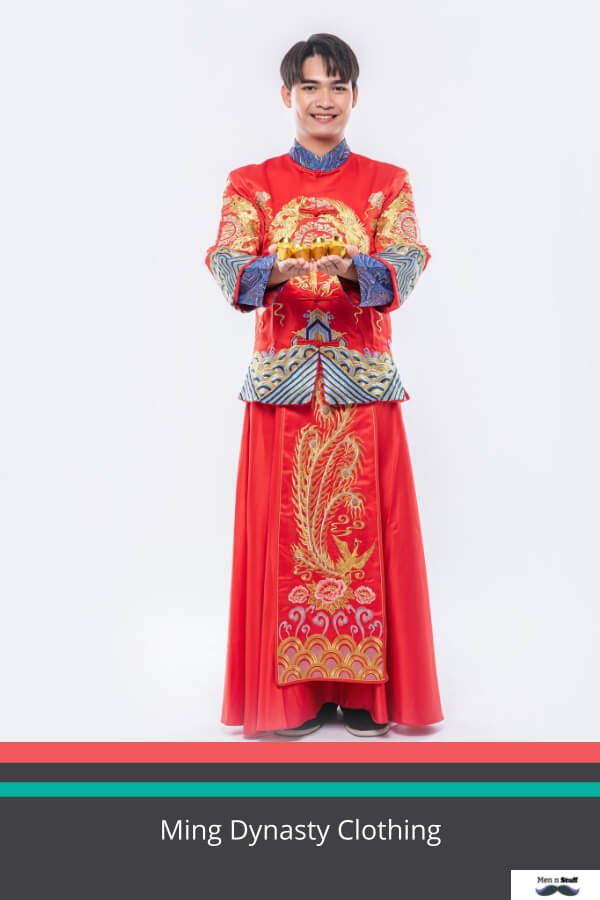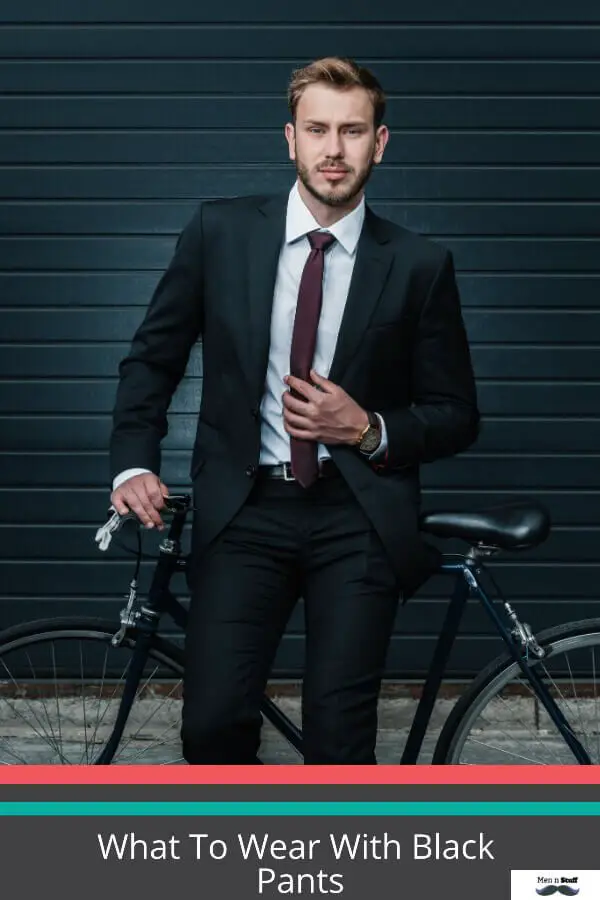Ming Dynasty men’s costume style featured elaborate, long robes known as “changshan” or “pao,” often in rich silk with intricate embroidery. They included elements like high collars and wide sleeves. These outfits displayed intricate craftsmanship and symbolism, reflecting Ming society’s hierarchy and values.

Ming Dynasty Clothing History
- The Ming Dynasty, reigning over China from 1368 to 1644, was a period noted for its advancements in literature, philosophy, and arts, alongside the distinctive clothing styles. The Ming epoch witnessed the regulation of a strict clothing hierarchy system, embellished with intricate designs reflecting cultural aesthetics.
- Imperial AttireThe emperor’s robes were the epitome of grandeur and opulence. Generally designed in yellow or red, the emperor’s attire was adorned with motifs of dragons, representing supreme power and authority.
- Official DressesThe civil and military officials of the Ming Dynasty dressed as per their ranks. Civil officials wore robes with mandarin squares or buzi, depicting birds. Military officials’ robes, on the other hand, sported various animal motifs, symbolizing their ranks and respective roles.
- Hanfu – The Popular OutfitMing Dynasty clothing was marked by the resurgence of Hanfu, traditional Han Chinese clothing. Characterized by a cross-collar, wrapping the right lapel over the left, and sashed waist, Hanfu came in different styles fitting various occasions.
- Women’s AttireWomen during the Ming Dynasty predominantly wore Hanfu. The clothing featured a loose upper garment or ru, and a pleated skirt or qun. Opulent attire for upper-class women often included intricate embroidery.
- Footwear and AccessoriesShoes were primarily made of silk and embroidered with various patterns. Cut silk decorations known as “knot-flowers” were widely used as accessories during the Ming Dynasty.
- Materials and ColorsMing Dynasty clothing fabrics ranged from silk, and brocade, to ramie depending on the wearer’s social status. The color choice was guided by the “Five Element Theory” with each color representing a direction and an element – blue for East (wood), white for West (gold), red for South (fire), black for North (water), and yellow for Center (earth).
- LegacyMing Dynasty clothing has left a lasting legacy, influencing not only the subsequent Qing Dynasty’s couture but also modern East Asian clothing designs. Its elegance manifests today in forms like the Chinese cheongsam (qipao) and the Japanese kimono.
In conclusion, Ming Dynasty clothing, steeped in symbolism and hierarchy, forged its unique sartorial identity. It served not only as a means to cover one’s body but also as a profound articulation of societal values and aesthetics.
What Did Men Wear In The Ming Dynasty?
Men’s clothing in the Ming Dynasty can be divided into two parts: upper and lower garments. The upper garment includes waistcoats and jackets, while the lower garment consists of trousers and skirts. Generally speaking, men wore a long-sleeved shirt with either one or two pairs of collar necklaces that were fixed tightly at the base of their necks to keep them from opening up too wide when they bent down; pants made out of silk fabric decorated with patterns such as flowers, birds, fish scales or other designs. They would also wear knee-high socks under their trouser legs; an outer coat called “jia” worn over all this which had a round collar typical for what was worn by officials during the Ming Dynasty era.
What Style Of Ming Dynasty Clothing Can Be As Men Costume?
Men in the Ming Dynasty could wear a long-sleeved shirt with either one or two pairs of collar necklaces fixed tightly at the base of their necks to keep them from opening up too wide when they bent down; pants made out of silk fabric decorated with patterns such as flowers, birds, fish scales or other designs. They would also wear knee-high socks under their trouser legs; an outer coat called “jia” worn over all this which had a round collar typical for what was worn by officials during the Ming Dynasty era.
Hing in Ming Dynasty can be divided into two parts: upper and lower garments. The upper garment includes waistcoats and jackets. It is important to note that the collar of a coat would not be worn in public as it was considered unseemly.
Trousers were more prevalent than skirts, with different kinds of fabrics being used for their construction: linen and hemp for working trousers; silk fabric for formal wear. A person’s profession had an effect on what style they could afford. The rich might even have gold clasps sewn onto one side or lining where there are slits made so that when they walk, the embroidery moves back and forth like waves!
Socks are often overlooked but were very common throughout history until World War II broke out; some people wore them up over their knees while others just pulled them above their ankles but no one wore them under their shoes.
The shoe style is what helped determine the social status of a person in ancient China, with servants and peasants wearing cloth wrapped around their feet while nobles would wear silk slippers or leather boots.
Trousers only became popular during the Ming dynasty because they were introduced by traders from Central Asia who traveled through East Asia to get Chinese goods like silks and porcelain
Fancier versions of the classic sleeveless tunic could be made using luxurious materials such as gold thread for embroidery work; this was usually reserved for members of royalty since it took artisan months to complete one piece!
What Did The Ming Dynasty Wear?
The Ming dynasty, which was established in 1368 and ended with the death of the Wanli Emperor in 1644, is a period marked by social stability. The clothing style during this time also reflected that sense of peace and harmony as it was relatively simple yet elegant. Most people wore basic tunics for daily wear while those who could afford luxurious materials used them to make fancier versions of the classic sleeveless tunic. Some men also took their fashion cues from military uniforms and started wearing pants instead of traditional long robes; these trousers only became popular because traders introduced them from Central Asia where they were commonly worn under shoe styles such as boots or slippers
What Is The Name Of Traditional Chinese Male Clothing?
The name of traditional Chinese male clothing is the Changsha. The Changsha has been worn by all classes, except for slaves and servants, since ancient China. It was first introduced to Japan in the 18th century as a garment that represented wealth and power. Its form varies from dynasty to dynasty but remains unchanged until today.
How Was The Ming Dynasty’s Approach To Clothing?
The Ming Dynasty’s approach to clothing was that men could wear whatever they wanted, as long as it served a practical purpose. Women were not allowed to work outside their homes and so had more restrictive styles of clothes while the items for men ranged from military uniforms to traditional robes. The only class where there seemed to be some restrictions on how you dressed was upper-class women; which is what influenced Confucian scholars’ attitudes towards gender roles in society during this time period.
The term “Ming dynasty” refers broadly here just because it would have been too much detail to go into about every era and when different types of clothing began being worn by various groups including slaves or servants (although I could do an article specifically on these different clothing styles).
– what style of ming dynasty clothes can be as men’s costume
The term “Ming dynasty” refers broadly here just because it would have been too much detail to go into about every era and when different types of clothing began being worn by various groups including slaves or servants (although I could do an article specifically on these different clothing styles).
It was not uncommon for the wealthy class, which included women from royalty up to scholars’ wives, to wear more luxurious fabrics such as silk. For those in this group who were merchants or had their own businesses, they often wore a mix of traditional robes and Western fashions like high heels with long skirts that revealed ankles–which is why some people refer to Chinese women wearing this style as “lotus feet.”
I found another article on the website History of China to be helpful in understanding what was going on throughout this period. It says that, by the Ming dynasty era, there were four distinct styles of dress: scholar attire (which is a robe), military clothing for both men and women soldiers, clothes worn by peasants working their fields, and finally palace attire. The last two are different from scholarly because they do not have collars like robes but instead have woven hems which make them more practical for everyday wear.
Dazzling Chinese Clothing In Ming Dynasty
What Style of Ming Dynasty Clothing Can Be as Men Costume? | Blog Post Title
The style of clothing worn by Chinese people during the Ming dynasty era (which is a traditional period in China from 1368 to 1644) can be used for men’s costumes.
In this article, we will explore what styles are available and some things you should consider when deciding on what style to wear.
Ming dynasty clothes have various elements that made them recognizable at first glance: long skirts that revealed ankles–which is why some people refer to Chinese women wearing this style as “lotus feet.” I found another article on the website History of China to be helpful in understanding what was going on throughout this period. It says that, by the final years of the Ming Dynasty, people were wearing these clothes.
References:
https://www.cits.net/china-travel-guide/dazzling-chinese-clothing-in-ming-dynasty.html
https://english.visitbeijing.com.cn/article/47ON7DZb6xw

